For B2B marketers, operating in a data-informed manner to do everything from optimizing budget allocations down to deciding what campaign content will outperform the rest has become a prerequisite; however, all of the AI/ML in the world will not remove the need to optimize the data we push into these systems to avoid the age-old garbage in, garbage out result.
The future of B2B paid advertising, as with most marketing mediums, is now largely based on data and machine learning and less and less on manual bidding. B2B marketers who get in front of this and evolve to leverage tech-enabled best practices will realize best-in-class results while gaining a sustainable competitive edge.
This article focuses on the current best practice for B2B marketers to leverage Google’s Offline Conversion Tracking and Smart Bidding. The information in this article is derived from a) our work directly with clients b) interviews with 30+ marketers who spend over $1M on Google and c) guidance from our inside contacts at Google.
What is Offline Conversion Tracking?
The Google Ads offline conversion tracking API allows for following a prospect who clicks on an ad using non PII (personally identifiable information) methods through your offline systems such as a CRM and/or the payment component of your self-service SaaS product back to Google to accelerate Google’s Machine learning on the advertiser’s behalf.
The ROI of Using Googles Offline Conversion Tracking
In our research and in our direct customer work we see a 25-35% reduction or more in CPA for paid search as well as an increase in average order value from 7-14%. These are astounding numbers.
Assume you spend $1M a month on search and lower your CPA by 30%, you would save $300k in the month. Assuming your ROAS is 5x and that $300k is reinvested you could potentially generate as much as +$1.5M in revenue. Even taking into account the natural diminishing returns, this implementation can create compelling spend optimization and follow-on attributable revenue.
From a competitive standpoint, you gain a data and technical edge in the market. Your competition on the other hand loses a compete advantage because you have the data science edge. They continue to garner less valuable leads, yielding higher CPA and lower average deal size.
In addition to direct ROI there is also time saved for the paid search manager. While Google Smart Bidding is not completely hands off (more on this later) it is less time intensive than manual bidding. This lets your paid search manger spend more time on copy, landing pages and other optimization activities.
How Does Offline Conversion Tracking Work?
In the image below a user clicks on your paid search ad. In the URL there is something called a GCLID, a Google Click Identifier. This is a unique non-PII identifier tied to a click on a given ad at a given moment in time for a single individual.
The marketer captures the GCLID at the time of the form fill, and attaches that to the lead record in the CRM. As that lead progresses through the funnel, information is sent back to Google.

Google uses this information to build intelligence about your best prospects. The more high-signal data you can feed Google the faster it learns and the more equipped Google is to bid high on profiles that best match your best prospects and low on profiles that enter but do not progress down your funnel.
In addition to or in replacement of the GCLID approach, advertisers can send hashed email addresses back to Google for leads from paid search. If Google can match on that email address this method achieves the same results as capturing and returning the GCLID. It’s important to note that Google will not match on all of the email addresses you send back which will reduce the data volume Google’s machine learning will have to work with. Data volume, discussed later in this article, is a critical factor in getting the most from Google’s offline conversion tracking.
A Simple Example
In this example a user is searching for the word “safety”. Safety is a broad term applicable to many topics such as Industrial Safety, Home Safety, Internet Safety and so on. When your campaign starts, every person searching for this term regardless of what type of safety they are looking for looks the same to Google, meaning your paid search efforts are competing with too many advertisers.
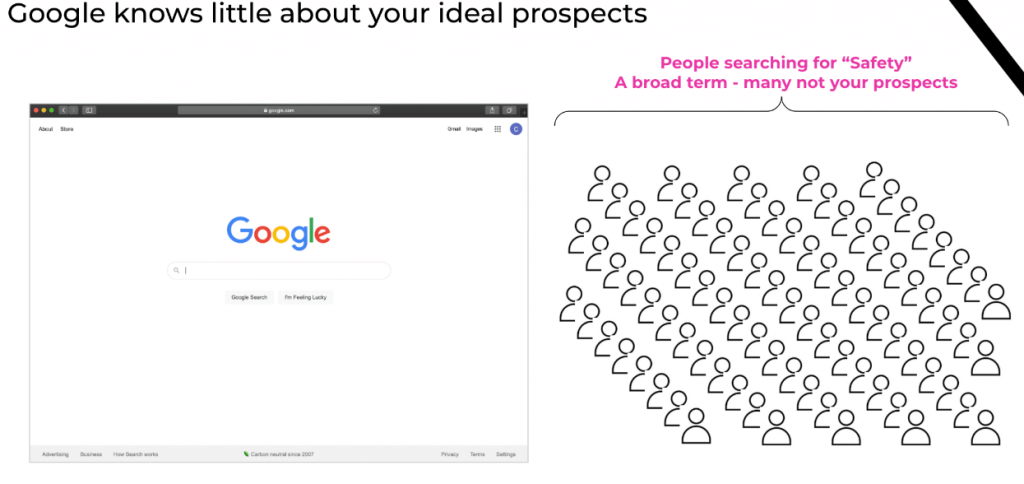
Here is an example of 260 attributes Google knows about an individual. We know Google ads has quite a bit more information that informs its machine learning, but this helps us understand how the algorithm is accelerated by using Offline Conversion Tracking.

When you send information back to Google, their machine learning builds a profile of what your best prospects and paying customers look like.
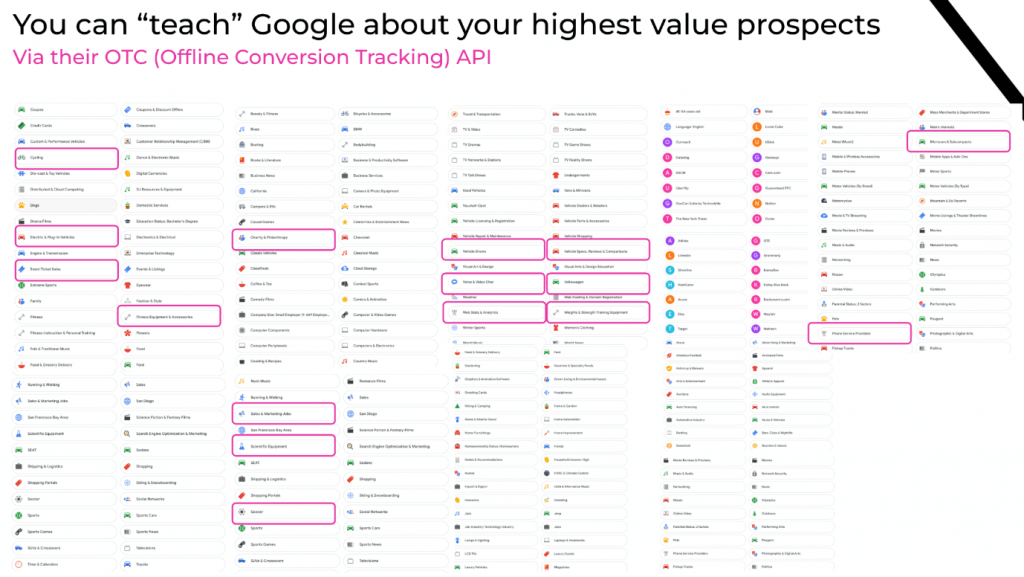
When users who match the profile of your best prospects search for your keywords, Google knows it should bid much smarter for them and you either gain the advantage in the auction or have the data to further inform a manual bidding approach.

You’ve gained the data and technical edge in the market. You win in the auction. Your ads are at the top of the page and you get the high value customers. Your competition on the other hand cannot afford to compete because you have the data science edge. They get less valuable leads, lower-funnel conversion rates, higher CPA and lower average deal size.
Six Offline Conversion Tracking Best Practices
- Measure revenue attribution and funnel conversion rates across all paid media
- Use lead to opportunity matching to maximize the amount of high signal data you can send to Google
- Know your Ideal Customer Profiles (ICPs)
- Feed your custom attribution data to Googles Offline Conversion Tracking API
- Establish a dynamic programmatic automated solution
- Know how to pilot Googles Smart Bidding
Measure revenue attribution and funnel conversion rates across all paid media
Ultimately this is about getting scientific about what your business should spend in the Google Ad auction. You cannot know this without understanding how your Google budget performs in your overall advertising mix.
Revenue attribution analytics can help you understand the true ROAS of Google by giving you the full picture of how all of your advertising efforts touch all of the buyers in the buyers’ journey. Your Google ROAS cannot be known without this.
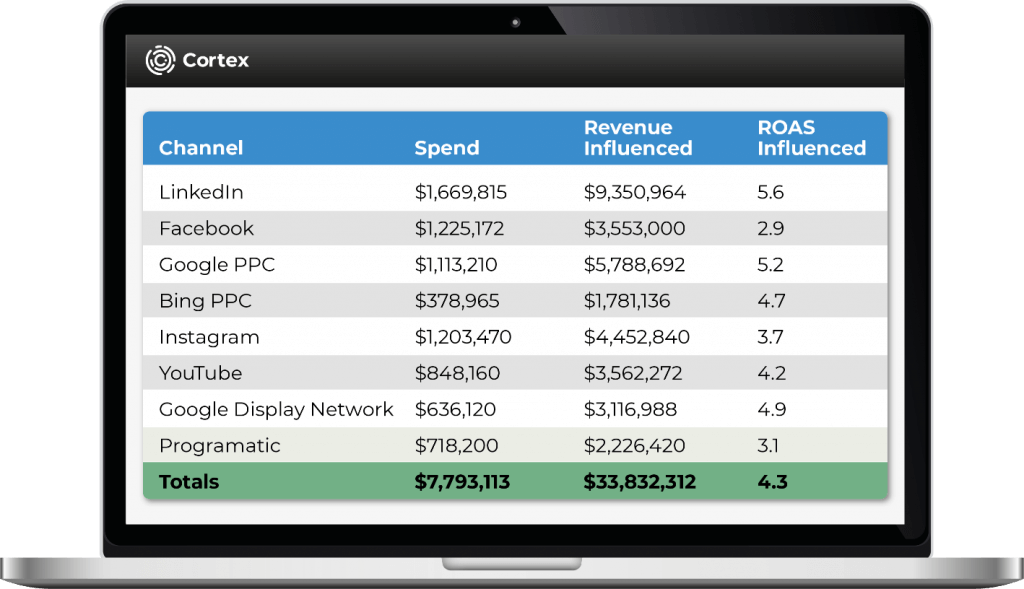
Knowing your funnel conversion rates is part of your equation for setting values on the GCLIDs you send back to Google.

Use lead to opportunity matching to maximize the amount of high signal data you can send to Google
Google requirements, and the direct advice you may get from your Google account manager, dictate a minimum of 30 conversions per month below the initial form fill submission per campaign in order for the algorithm to have enough information to learn. In our experience, this number is low and very well may not yield Google getting smart enough to outperform manual bidding.
We like to see 75+ conversion a month to feel confident this is all worth the effort.
For a quick review, the Google Click Identifier (GLCLID) is a unique value associated to a click on a given ad by a unique individual at a moment in time to identify the campaign and other attributes of the click associated with the ad for tracking and campaign attribution.
GCLID’s expire after 90 days, meaning the leads generated by paid search must have some progression in the funnel during this time period.
We’re looking for leads at least getting to MQL at minimum, SAL even better.
B2B marketers are often unaware of how much revenue data is hidden in their CRM if properly maintained. This data can be harvested to increase the data which can be sent back to Google by 2 – 4x.
But here’s the problem: In your typical CRM, you have only one contact associated to an opportunity because the salesperson needs only one contact attached to create the opportunity. Yet, in the real-world buying process, there are multiple client-side stakeholders involved. Salespeople don’t spend time to adding multiple contacts to the opportunity because they’d prefer to spend as little time doing data entry as possible and get back to selling things to people.

These additional people involved in the deal are often touched by multiple marketing activities.
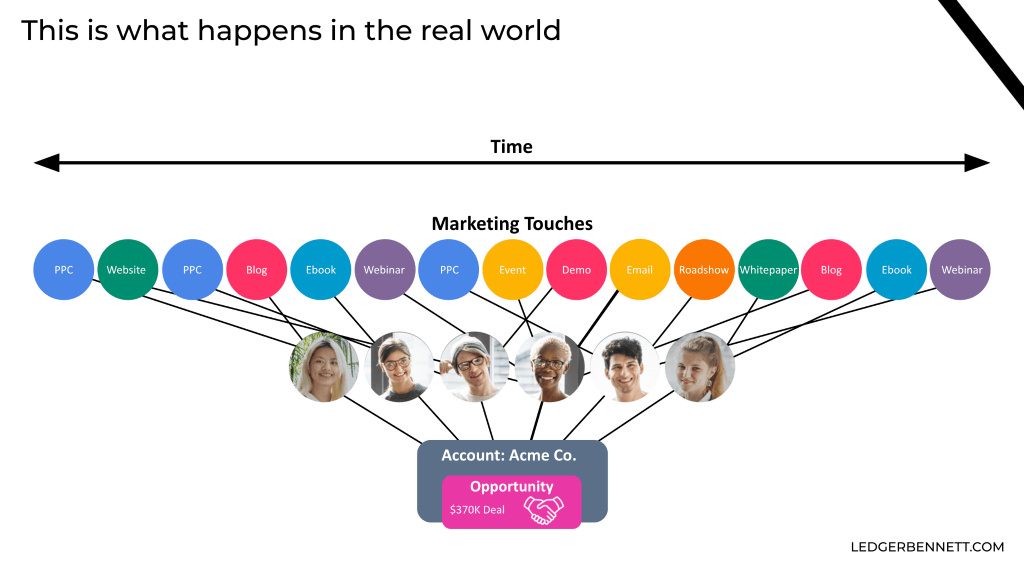
Imagine if you have the visibility to what’s really going on in the image depicted above. Unfortunately, these individuals are not attached to the opportunity in your CRM and, as a result, most CRMs unfortunately only store one marketing touch on a lead or contact. These leads are floating around in your CRM as leads we call “orphaned”. Your CRM data looks something like the image below.
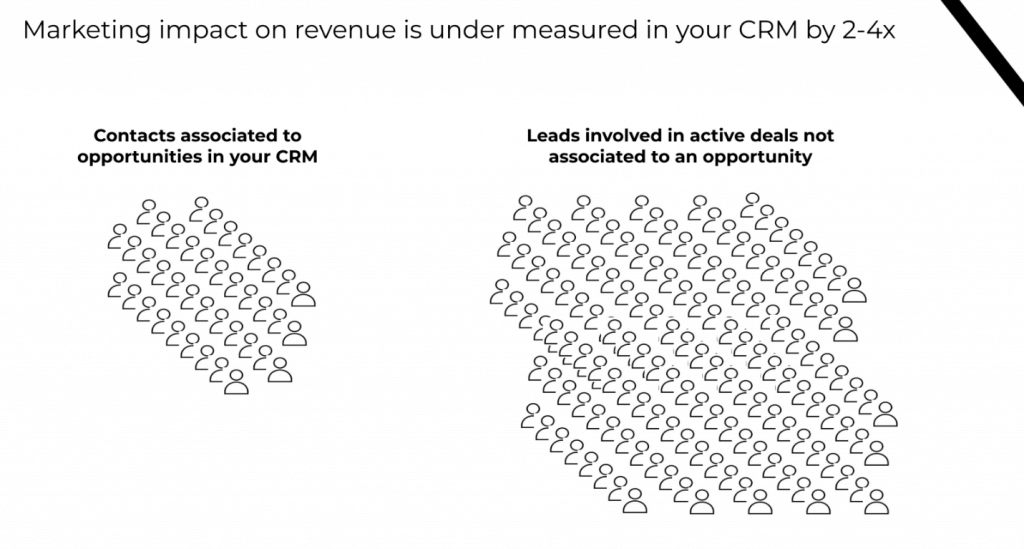
By tracking all touches on a lead / contact and using technology to connect leads to accounts and opportunities you can increase visibility of Marketing’s impact on revenues by 2 – 4x and increase the volume of data you can send to Google’s Offline Conversion Tracking API by 2 – 4x.
Meaning you have more information from which to make optimization decisions for all paid advertising and much more data to send to Google’s API.
This is how you create and maintain your competitive edge in Google search ads.
Know your Ideal Customer Profiles (ICPs)
Now that you have revenue attribution data for all of your paid media and you’ve attached your orphaned leads to your accounts you have a robust dataset that will help you better understand your Ideal Customer Profiles (ICPs).
Depending on the richness of your customer and account data you may want to use one or more data enrichment vendors to make your data more robust and insightful.
Using this information discover the profiles of the prospects that are associated with the highest value deals across all key product lines, segments and geographies. You will understand their historical funnel conversion rates, velocities and deal values.
With this information you can establish a programmatic method to value new leads you get from Google ads (or any other channel).
In the example below we look at two ICPs where predictive values have been established against all of the attributes of each ICP.

Knowing our funnel conversion rates, revenue values for each ICP, the true ROAS we are getting and desire from Google, we can generate the value we are willing to pay for a lead matching each ICP and each stage of the funnel.
Feed your custom attribution data to Googles Offline Conversion Tracking API
As new leads from Google progresses through the funnel you will send the established value for that ICP to Google each time a given lead progresses through the funnel.
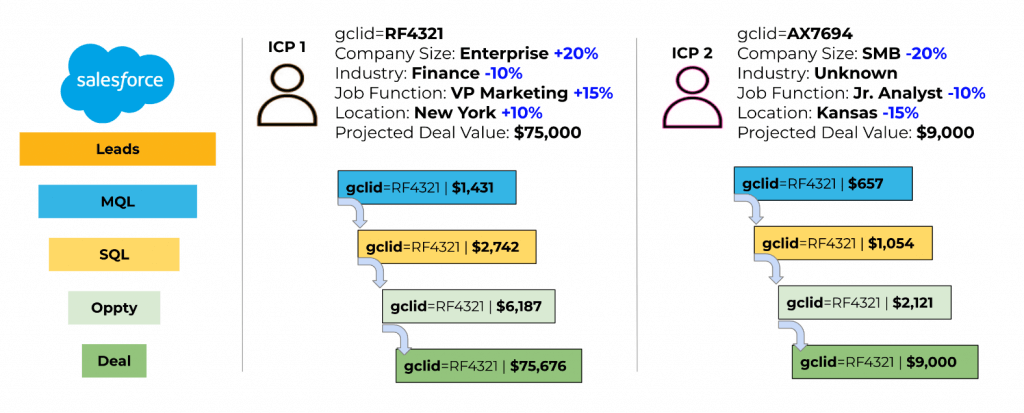
Establish a Dynamic Programmatic Automated Solution
As soon as your campaigns see the performance lift, all of the numbers in your funnel – conversion rates, velocity and deal size – may all change. As you introduce new products, change prices, go after different customer segments and enter new geographies everything will change.
This means all of the values in the system must be continually updated. Your solution needs to be automated. It needs to be always learning.
Paid Search Managers Must Learn to Pilot Smart Bidding
The techniques for effective management of Smart Bidding are still evolving.
Upon interviewing well over 30 paid search managers who have tried offline conversion tracking with Smart Bidding, we’ve found most have been successful, but some have failed when they had insufficient offline conversion data volumes to feed Google’s machine learning algos, did not yet know how to transition from manual to Smart Bidding, or became concerned due to Smart Bidding Campaigns behaving differently than those deployed using manual bidding.
Google Smart Bidding Is Not Completely Hands-Free
Smart Bidding campaigns need oversight and expertise. While Smart Bidding takes less time to manage overall compared to manual bidding, getting the most out of Smart Bidding campaigns requires oversight and the tactic of set it and forget it will not yield strong performance.
There is a best practice method of starting Smart Bidding campaigns and ramping them up. Smart Bidding campaigns behave differently than other types of search campaigns often performing erratically in the initial learning period. They can be sensitive to changes in ROI goals, budgets, and business seasonality among other things.
You should work with your Google account manager and/or a skilled agency to guide you.
The state of B2B Marketers’ Adoption of Google Offline Conversion Tracking
Our research suggests that roughly 25% of paid search marketers are currently using or have experimented with offline conversion tracking in combination with Smart Bidding and roughly another 20% are in the process of setting up Google Conversion Tracking.
This means there is an opportunity to get a competitive edge for those who move quickly.
Go Beyond the Off-Shelf Integration
As you investigate the available solutions in the market you will find a) the Google SFDC integration, b) the Zapier integration and c) our product – Cortex.
The SFDC and Zapier integrations are simple ways to send a GCLID back to Google. You will have to build custom code to achieve most of the goals established in this paper. This is a very complex endeavor.
Cortex offers all of the capabilities to deliver on the best practices outlined in this paper.
When you consider that Cortex is a dynamic always learning system, it has a view of all of ROAS across all of your paid media, your funnel conversion rates and velocities, revenues across product lines and GEOs, your ICP and predicted ICP values you get a massive data advantage.
Customers additionally use the revenue attribution analytics in Cortex to make manual optimizations across other platforms such as LinkedIn.
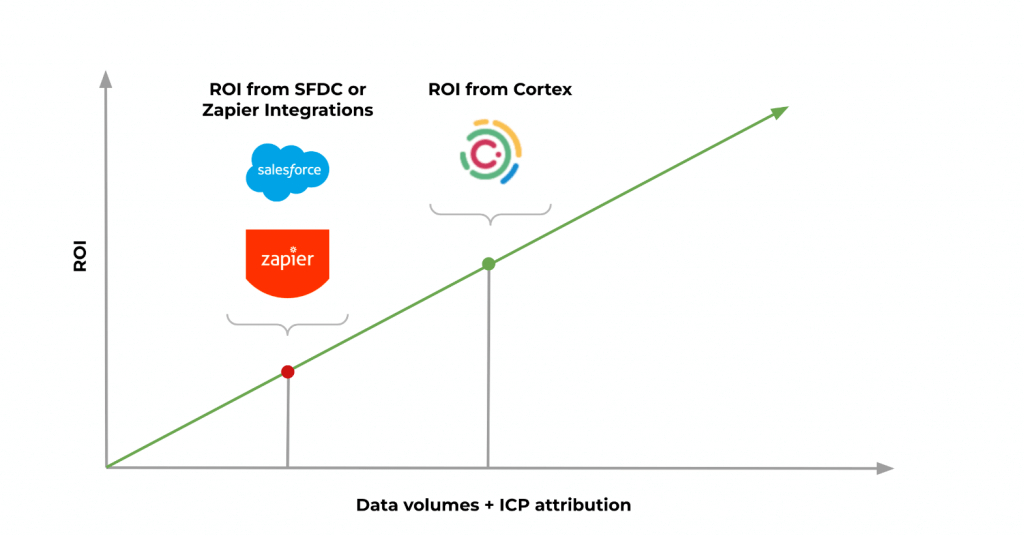
Next Steps
Ready to take your paid media capabilities to the next level? Contact us for a complimentary readiness review and discover how Cortex deployed unilaterally or packaged with our paid search management services can deliver you the revenue-attributable results we’ve detailed above.